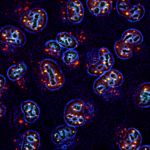Lien vers Pubmed [PMID] – 30104677
Sci Rep 2018 Aug;8(1):12031
In Peru, hepatocellular carcinoma (HCC) arises in young non-cirrhotic patients. Hepatitis B virus (HBV) is suspected to be the prominent etiological agent. We thus performed a comprehensive molecular study of HBV infection in 65 Peruvian HCC patients. Only 51% were considered as persistently infected at the onset. HBV DNA was found by PCR in the tumor and/or matched non-tumor liver tissues in more than 80% of cases (n = 53/65). HBV DNA was significantly more abundant in livers of younger patients than in those of the older ones. We consistently observed low viral DNA burden (0.1-6.5 copies for 100 cells), with viral genomes in younger patients displaying higher proportion of mutations at di-pyrimidines (TpT and CpC, P = 0.006). A drastic activation of multiple DNA repair pathways in tumors of younger patients was observed. Our observations clearly challenge the current vision that associates high HBV DNA load with earlier tumor development. We concluded that in Peru, and maybe in other populations with Americas’ indigenous ancestry, HBV-associated liver tumorigenesis might differ significantly from that generally observed in the rest of the world. Procedures used to screen for HCC development in subjects at risk should be adapted to the local situation.




